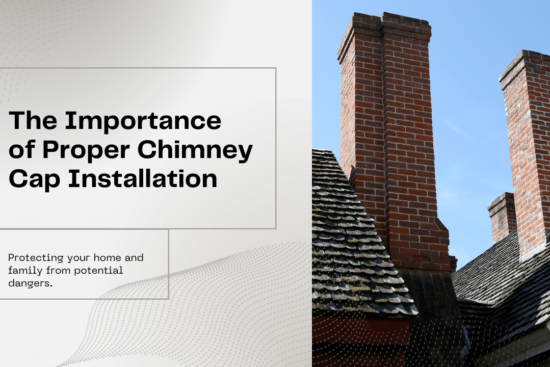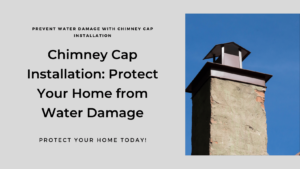© All Rights Reserved | Roof Replacement and Repair - Zaman Roofing LLC. | Website Design & CT SEO Powered by High Point SEO CT
- Google Rating5.0Based on 33 reviewsZaman Roofing - CT Roofing Contractors & Roof Repair5.0Sergey Y."Zaman Roofing” recently completed a roof replacement project in our condo complex, and we are extremely satisfied with their service. From start to finish, their team demonstrated professionalism, efficiency, and exceptional craftsmanship. They were prompt in their communication, providing detailed explanations and answering all our questions. The crew arrived on time, worked diligently, and completed the project within the estimated timeframe.Not only did Zaman Roofing exhibit outstanding technical skills, but they also ensured minimal disruption to our daily activities. They took great care to protect our property, cleaning up thoroughly each day and leaving no trace of debris behind.The quality of the new roof is outstanding. Zaman Roofing used top-grade materials and paid attention to every detail, resulting in a sturdy and visually appealing finished product. The roof has significantly enhanced the overall appearance of our condo complex.We would highly recommend Zaman Roofing to anyone in need of roofing services. Their professionalism, expertise, and attention to customer satisfaction make them a reliable choice for roof replacements. We are grateful for their excellent work and would not hesitate to hire them again in the future.Christopher Z.Zaman Roofing was AWESOME!!!! This is my third time doing a roof in CT on my third home and Zaman did an outstanding job on my rather unique roof line. They even replaced a skylight. I needed a Roof Contract in place before insurance would allow the purchase because the seller was a DeeBag. Zaman worked with my realtor, banker, etc and even waited patiently while the seller delayed the process by 4 months. The week I closed, Zaman Roofing was up and at em. Stripping, prepping and replacing. In and Out. Property was nice and clean after the work was complete. I would highly recommend.Steve TZaman Roofing, located in Berlin, CT, truly excels in providing top-notch roofing services. I am absolutely thrilled to give them a well-deserved 5-star review for their outstanding work. They have proven themselves as experts in roofing Berlin CT, and I couldn't be happier with the results.When it comes to roofing in Berlin, Zaman Roofing stands out from the competition. Their team of skilled professionals demonstrated exceptional attention to detail during the installation of my new roof. They meticulously handled every aspect of the project, ensuring both aesthetics and durability were top-notch.What impressed me the most was Zaman Roofing's commitment to customer satisfaction. From my initial contact with them, they were responsive, courteous, and eager to understand my specific roofing needs in Berlin. Their exceptional customer service throughout the entire process made me feel valued as a client.Zaman Roofing's expertise in roofing Berlin is truly commendable. They have an extensive portfolio of successful projects throughout Berlin, CT, showcasing their skill and knowledge in a variety of roofing styles and materials. Regardless of the complexity of the job, they have the necessary resources to deliver exceptional results.I cannot emphasize enough how satisfied I am with Zaman Roofing's services in Berlin, CT. Their professionalism, reliability, and dedication to their craft are unparalleled. If you're searching for exceptional roofing services in Berlin CT, Zaman Roofing is the company to choose. They will exceed your expectations in every way.In conclusion, Zaman Roofing unquestionably deserves a stellar 5-star rating for their exemplary roofing services in Berlin, CT. Their expertise in roofing Berlin and roofing Berlin CT shines through in their exceptional workmanship and customer service. I highly recommend Zaman Roofing for all your roofing needs.Gary G.Zaman replaced the roof on my 2,200 sq. ft. colonial in 2015. The workmanship was perfect. Unfortunately, over time, the top-of-the line shingles discolored. He was totally supportive in getting the manufacturer to replace them at no cost to me. He just replaced the roof with the new shingles. It was another perfect job. It was completed in one day. The crew was great and they cleaned the area spotless.Chris DWe used Zaman Roofing for our Roof and Gutter Replacement, I acquired 5 quotes for the work and found Zaman to be the most reasonable, it was a Good Decision to choose Zaman Roofing, Seweryn was Professional in every aspect and the Clean-up was nothing short of Amazing, I would Highly Recommend using Zaman RoofingRobert D.Excellent Service and Value - great crew and easy to deal with - highly recommended !Sunghoon P.Great work and reasonable price. I am so happy with their service. I asked a bunch of questions before and after the service and his responses were very prompt and straight to the point. Highly recommend.Adrienne M.I am so pleased that I used this company. My new roof looks fantastic. Such a hard working crew. Seweryn was informative and professional. Price was very completive. Don't hesitate to use them you will be very satisfied. Highly recommend!Nancy M.Good communication, timely response and knowledgeable. Very happy with our experience and highly recommend this company.Beata M.We used Zaman for our roof replacement recently and are very pleased. They replaced our roof in one day and gave us a very competitive quote. Good quality of work. Highly recommended.Lori K.They were here when they said they would. Professional & left everything neat ,cleaned up everything. They were in & out in a day & a half. Would recommend Zaman roifing.Dan R.A+ service, professional and quick response time.Anna G.Zaman and his crew provide great workmanship they installed new roofs they take great pride in the work they do. They were punctual and did a amazing job with the roof installation and clean up. Highly recommend Zaman Roofing to family and friends. Thank you for the opportunity to work with such a amazing contractorScott M.Awesome contractor, I would highly recommend him to family & friends. Seweryn & his crew were here on time & worked diligently. They were the happiest workers I've ever dealt with (I am a former construction project manager with the Federal government). Any & all questions were answered. My neighbors couldn't believe they finished the job in one day & complimented how great the new roof looks.Clement D.Great roofing contractors. I love to recommend it to my friends and family.Karen 9.With the quality, price, timeliness, all round nice guy and great crew, Zaman Roofing LLC is what other companies aspire to be.... Clean, helpful and a pleasure to recommend....james C.Excellent experience from start to finish, all appointments and work times met in a timely fashion, workmanship and clean up left nothing to be desired.Would be a definite recommendation, very pleased.Margaret B.I had obtained multiple quotes and did my due diligence research and Seweryn Zaman came back with fair price and good recommendations. He was professional, explained everything that he was going to do and never once he rushed me during decision process. He showed up on time with his hard working crew and finished my roof in one day. I was amazed with his crew who worked like busy bees. Very impressed with the clean up process and the end product. Two months after he finished my roof he was still helping me deal with the insurance company making sure I had everything I needed. Thank you SewerynSteve B.Very professional and easy to work. The crew came in, replaced my roof and then cleaned up everything! Highly recommended.Jim O.Competitive quote among four others. Seweryn Zaman provided larger color samples of the shingle colors we were interested in. He obtained the building permit, showed up on the day expected with his entire crew. Our older roof was on 24" trusses and needed more plywood replaced than anticipated. He got the additional sheets replaced on the day of the re-roofing. The crew worked with him late until the job was done and picked up every piece of old debris. The roof passed final town inspection with no concerns. Zaman Roofing is easy to deal with; he's responsive on text messages and phone calls. I used them in the past for an emergency repair and he found a well-hidden leak from the builder.Dale C.The crews did a good job, and the leader of the crew did a great job when they replaced the roof of my house in Farming on 7/6&7 this year. When they worked on the project, they worked professionally and in detail. We are very pleased with the work they have done, and highly recommend people to have the company worked on their roof projects.Forrest B.Zaman's was very professional, excellent quality of work and very responsive to our needs. This roofing experience was excellent from start to finish and provided an excellent value. Would certainly recommend them to any friend.Yonatan M.We used Zaman Roofing to replace our roof in 2019 and could not be happier with the service and product. A highly professional company and great personal interaction with the owner. The workers took great care of our landscaping, and the owner was there frequently to supervise the work and take care of finishing touches like flashing the chimney. We have had zero issues since then and highly recommend this company.Quinn V.Zaman was awesome. He was communicative, on-time, and was able to give me a quick inspection of our roof despite the rain. I rarely have a contractor tell me that I didn't need to spend any money, but Zaman told me my roof was fine for the next several years.magdalena K.We recently used Zaman Roofing to replace our 26-year-old roof. Right from the start they were great! Sevy was extremely professional and knowledgeable and gave us a great quote. Everything was done as they described and the final project looked great. The owner was on the job from start to finish as he promised.Ariadna G.Our experience with Zaman Roofing was excellent. I was very impressed with both their work and their customer service. Seweryn was very knowledgeable and professional.Larry G.What a wonderful business. Very responsive. They showed up exactly when expected, completed the project quickly and accurately and left no trace after clean up. All with a very competitive price. I would highly recommend Zaman to anyone looking to have roofing work done.STEVE R.I was very pleased with the roof and gutter repairs performed by Zaman Roofing on two of my buildings. Good workmanship and fair prices, I would recommend and use again.Danielle D.These guys stripped and reshuffled my roof is 1 day! They did an awesome job. Roof is beautiful. He uses a dump trailer which is great and they cleaned up well. Very happy with the work. Also pricing was fair.

This Is Why You Need Correct Chimney Cap Installation
Category: Roof Maintenance • June 3, 2024
A chimney cap is crucial in any chimney system. It is a vital complement when constructing a chimney. Chimneys must be fitted with a cap that will allow for proper drafting; the cap must be appropriately installed to prevent damage due to weather and animals, and the cap must act as a preventative measure for chimney fires.
Prevent Water Damage
As it turns out, a chimney cap–that is, the structure installed at the top of the chimney–helps to prevent moisture penetration into the chimney flue from rain or snow. Water that makes its way into the flue can cause damage in several ways:
Water Intrusion – Water penetration leads to erosion and deterioration of the flue lining, as well as interacting with creosote and other debris found in the chimney, causing further damage. This can lead to costly repair work.
Chimney Flue Clogging –Water leads to the deposits in the chimney creosote, and residues come off from the flue walls. This can result in the formation of blocks that inhibit the free flow of air inside the structures.
Leaks – Water from the outside tends to penetrate the chimney, causing further damage such as staining the walls, ceilings, etc. A good cap prevents this.
Mold and Mildew – Excess moisture that builds up in the flue or the entire home can lead to the growth and penetration of mold and mildew. This then leads to complications and wear and tear of materials.
Proper chimney cap installation requires a design with proper flashing, ensuring that all openings are well-sealed to prevent the penetration of snow, rain, and other weather conditions.
Improve Drafting Performance
A chimney cap should be well-fitted. It must not hinder the flow of air through the flue. Restrictions can cause:
Poor Draw – If air circulation is impaired in the room, instead of the smoke going up the chimney, it remains trapped inside the house; this is very dangerous.
Effect of Restricted Air Flow – If air flow is restricted, more creosote tar accumulates on the flue lining as well as the cross-section of the flue. This increases the chances of having a chimney fire.
In this process, a fire does not fully combust, and if there is insufficient air circulation, it emits poisonous smoke into the rooms.
A good cap does not encroach on the space around the flue opening, which is necessary to provide the updrafts required for the proper removal of fumes.
So, ensure you enclose the area so that no animals can get in and so that no debris falls into the tanks.
Chimney Caps Minimize Chimney Fires
As mentioned above, caps help to prevent water damage because they stop water-washing debris from going down into the flue, causing creosote accumulation.
Reducing the Amount of Oxygen – Free air entering the house through an open flue provides oxygen that can kindle a chimney fire. An end cap prevents additional air intake.
Preventing Sparks and Embers – Screens are used primarily during windy days as they help prevent sparks and embers from exiting the flue. This prevents the accumulation of ignitable materials on the roof.
Chimney caps are handy when installed with suitable materials and critical professional installation processes.
Key Features of a Good Chimney Cap
As highlighted above, to gain the benefits of cement chimney caps, one requires both the best designed chimney caps and installation services. Here’s what to look for:
Cap Materials
Stainless Steel: Very resistant material with outstanding corrosion and erosion resistance. Copper stainless steel caps have durability that can make these products last for decades.
Copper: Also has a high level of corrosion resistance. Copper caps form a unique layer on their outer surfaces while withstanding the effects of weathering. This may be a pricier option.
Steel: Depending on the type of powder or galvanizing, steel is cost-effective and reasonably durable. Needs occasional touch-ups.
Cast Iron: A cast iron cap is a very durable part; it has an excellent life expectancy. Several finishes of the porcelain enamel include enhanced features of rust protection.
Meshes
The stainless-steel mesh filter is usually used in quality chimney caps and should have small openings to prevent sparks, debris, animals, etc., but they should also allow smoke through.
Designs
Avoid caps with an inverted cone design at the top so that they do not collect any water. Additional features such as side panels and sloped construction offer extra protection to prevent the entry of wind-driven rain. Using molded-in snow guards is essential in areas that experience cold weather.
Chimney cap installation is one of the most complicated procedures that you might ever encounter when maintaining your chimney system.
This makes chimney caps among the most crucial accessories that must be customized to effectively fit on the chimney safely. In DIY installations, people overlook the proper sealing of the cap to flue tiles, giving room for air and moisture to penetrate through. Professional installation ensures:
Proper Fit: A chimney specialist certifies your flue size and contour in accordance with the cap maximum fit.
Sealed Installation: All four sides of the cap are sealed to the flue using high-temperature sealants, bolts, welds, or brazing, depending on the sort of construction of the cap.
Inspection & Testing: A technician checks and ensures that no gaps, cracks, or openings exist that may have a bearing on the tank’s performance.
As with many things, getting a good chimney cap–one that fits correctly–is an investment that pays back in the sense of safety and reduced maintenance. Altogether, it is crucial to understand the significance of chimney cap installation and follow the correct procedures and recommendations.




